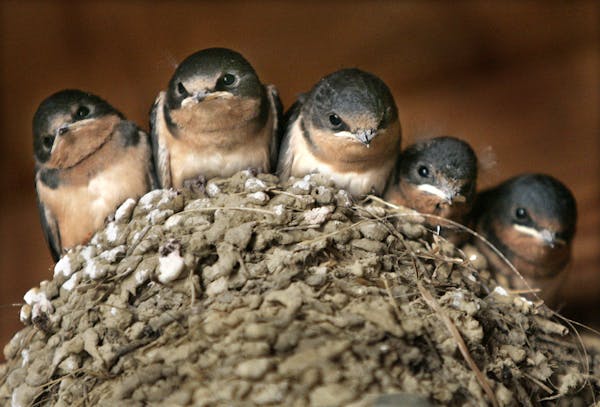The elusive and delicious common morel mushroom was adopted as the Minnesota state mushroom in 1984. We became the first state to designate an official mushroom as one of our symbols.
Morels are usually found when lilacs bloom and the ground is warm and moist — which could easily be a few more weeks in northern Minnesota. During the Memorial Day weekend, mushroom hunters continued to find morels 60 miles south and north of the Twin Cities, points between, and some beyond. These 2- to 6-inch high, brown, pitted, spongy-top mushrooms, with smooth cream-colored stems and hollow interiors, are a challenge to locate.
To find morels, check a variety of places, especially after a warm rain. Some people search old apple orchards, others look in evergreen forests, under stands of aspens, and elm and maple-basswood woodlands. Wooded areas are their favorite sites, but they also come up in grassy pastures and even in lawns. Morels are seen near stumps of recently dead trees and elms especially.
If you don't have a maple-basswood or other forest type to search for morels, try public lands. Minnesota state lands are places for visitors to collect small amounts of berries, mushrooms, or evergreen cones for personal use. You'll have to obtain a permit from the Department of Natural Resources if you intend to harvest a large amount or sell any.
Once you've found morels, cut or break off the stems right above the soil. Because they grow by spores, you should haul them out in a mesh bag so they drop more spores as you carry them through the forests. They don't store well, so cut them in half lengthwise and wash them in cold water thoroughly. Cook them and use them in any dish that emphasizes the mushroom or, for the best flavor, dehydrate them within a few days of harvesting. They should not be eaten raw.
We are now finding a few big feathers from Canada geese on the ground where they hang out. These are their flight feathers which are shed each year. Near the end of June, all the adult geese will be flightless until the end of July. Since the last few days of May, I have been seeing flocks of 20 or so Canada geese in V-formation heading north and northwest. These are southern Minnesota and Wisconsin geese not involved in nesting this season. They are headed north for new feeding and resting territories before they become flightless.
More whitetail deer fawns are arriving. Leave it undisturbed if you spot one in rest. The mother will return soon after you depart.
Young chipmunks and gray squirrels dart about exploring their new environment.
Jim Gilbert has taught and worked as a naturalist for more than 50 years.






